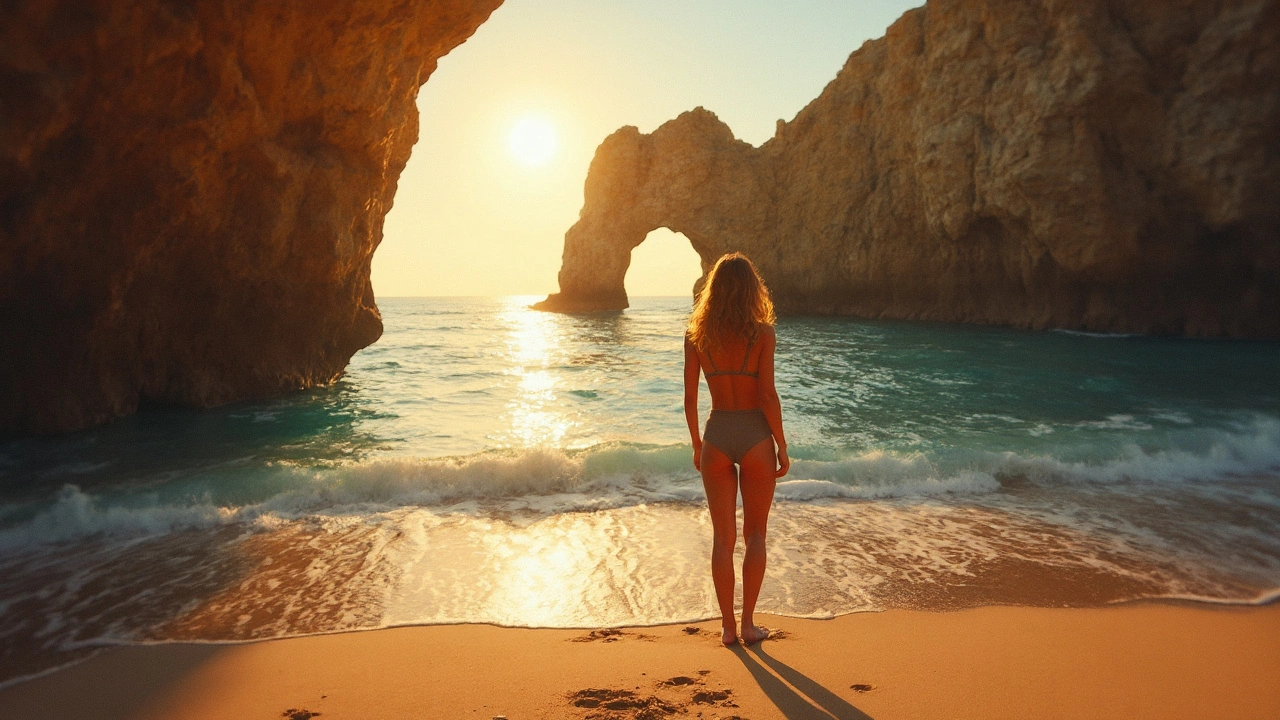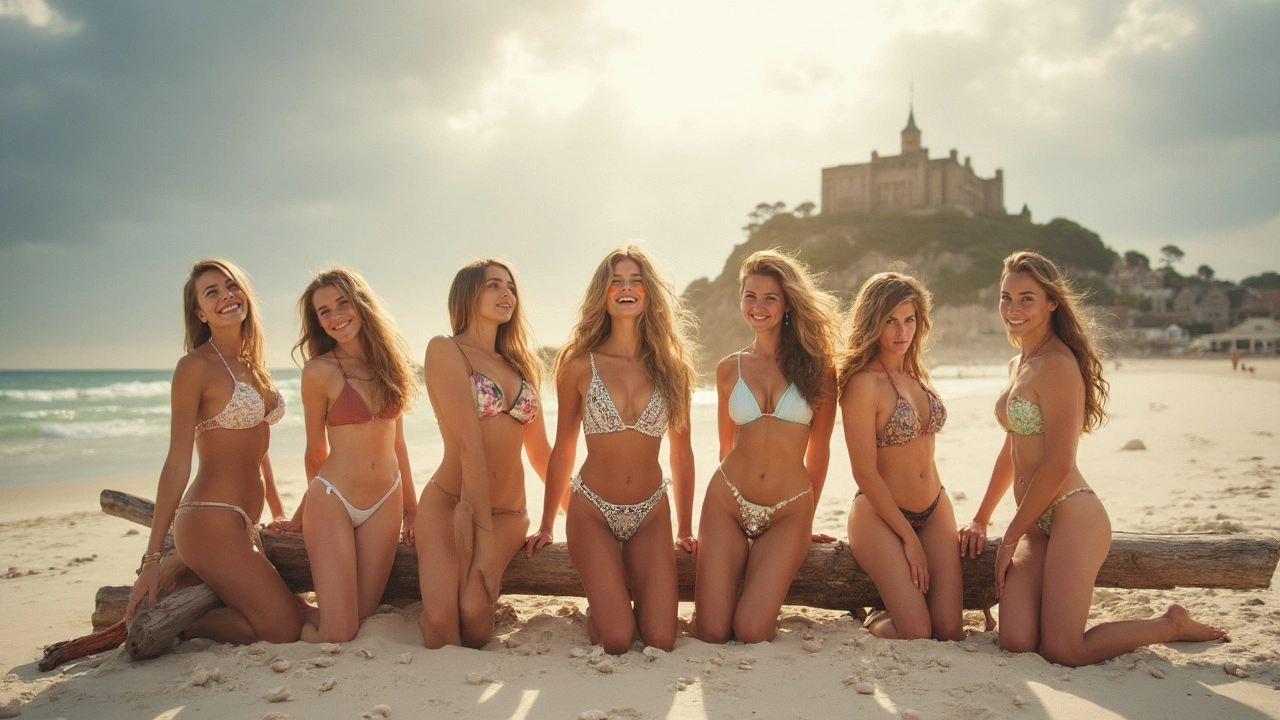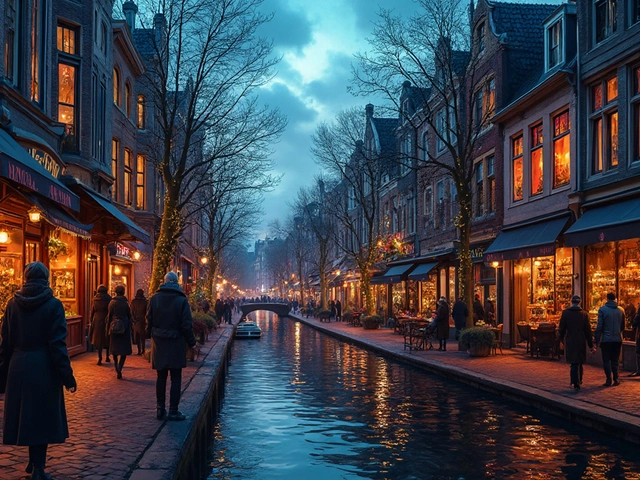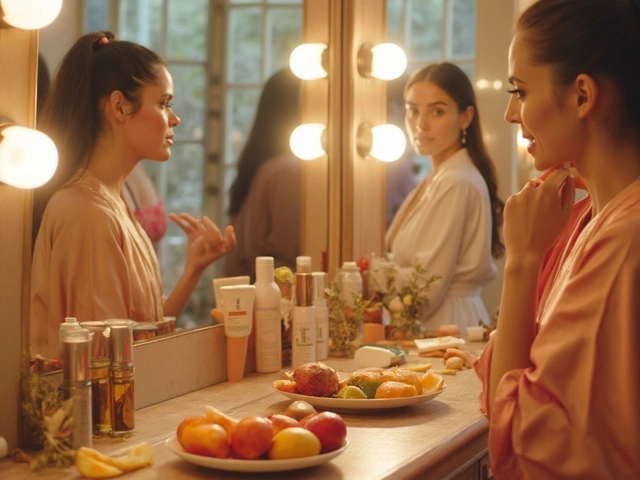Ever tried to capture that perfect beach photo only for it to look nothing like the dream image in your head? You're not alone. Bikini models, who practically live in front of the camera, have some stellar tips for making the most of your time in the sun. Let's dig into what they have to say.
First off, posing is everything. You don't have to be a professional model to nail a great shot. It's all about feeling comfortable and natural. Rather than rigid poses, go for movements like gentle sways or playful gestures. The camera loves a bit of motion, and so will your followers.
Lighting can make or break your photo. The golden hours—early morning and late afternoon—are your best friends. They cast a soft glow that avoids harsh shadows and highlights natural beauty. If you're shooting midday, look for some shade to diffuse those potent rays.
- Key Tips from the Pros
- Perfecting Lighting and Timing
- Using the Beach Environment
- Avoiding Photography Pitfalls
Key Tips from the Pros
When it comes to nailing beach shots, bikini models seem to have a knack for it. But what's the secret sauce behind those scroll-stopping pictures? It's not just about looking good in swimwear; it's about mastering a few handy tricks.
First things first, let’s talk about angles. Models often swear by shooting from an angle slightly below eye level. This trick works wonders to elongate the figure, creating a taller and more flattering appearance. So, whether you're working with a professional or just a friend with a camera, make sure to give this a try.
Next up, consider the backdrop. Nature offers some dreamy settings, with the sea and sky adding magic to any frame. But remember, you want the background to complement you, not overshadow you. A simple touch like a pop of color from a sarong or accessory can help you stand out against neutral tones like sand and water.
Now, onto an insider tip about posing: the S-curve. Mimic a graceful S with your body by shifting your weight to one leg and slightly curving your spine. It's a quick way to add elegance and dynamism to a shot, something every aspiring beach photographer should have in their toolkit.
Confidence is key—literally. Models agree that nothing beats genuine self-assurance in front of the lens. This might sound cliché, but owning your space and expressing authentic emotion can transform a standard photo into something memorable.
Here's a fascinating fact to consider: according to recent surveys, nearly 68% of professionals believe that natural lighting is the most critical factor in outdoor photography. So, never underestimate the power of being flexible with your shooting schedule to work with the best light.
Perfecting Lighting and Timing
When you're aiming for a killer beach photo, getting the lighting right is a game-changer. It's like having the best makeup artist but for the whole scene. Bikini models often emphasize the magic of the ‘golden hours,’ which occur shortly after sunrise and just before sunset. Why are these times so dreamy for photos? It's because the sunlight is softer and warmer, giving you a natural glow without the harsh shadows.
“The best photos come when light is your friend, not your foe,” says Emma Scott, a renowned beach photographer. “During the golden hour, the light is diffused, and everything looks just right.”
If you're shooting around midday, when the sun is blazing directly overhead, things can get tricky. But don't panic. You can always seek out some shade or use a reflector to bounce softer light onto the subject, cutting down on those unflattering shadows that make anyone look like a panda.
Another cool tip is to use the natural elements around you. The beach offers reflective surfaces galore, like the water and the sand, which can naturally brighten your photos. Just be sure to position yourself where these elements complement the light.
- Early morning and late afternoon provide the best light.
- If the sun's harsh, find some shade or use a reflector.
- Utilize reflective surfaces like water and sand to boost natural light.
Whether you're a professional or just sharing snaps with your friends, these tips can help your beach photography pop the right way. Trust in the timing, get cozy with the light, and watch your photos transform.

Using the Beach Environment
Getting the most out of your beach setting can take your beach photography to the next level. You’ve got nature's props all around; why not make them work for you? First up, think about the sand. It can provide a clean, neutral background that doesn’t compete with your colorful bikini.
The waves are not just for swimming; they add a dynamic element to your shots. Catching the tide in mid-movement can create a stunning effect and bring your photo to life. Plus, getting some water splashes in your shot can add energy and fun.
Let’s not forget about sunlight’s reflection on the water or wet sand, which can give off a magical glow. But watch out, because too much reflection can wash out your photo. Experiment with angles and positions to dodge this little hurdle.
- Natural elements: Use palm trees or rocks as natural frames. They can add depth and context to your photo.
- Colors and textures: Play around with contrasting colors, like a bright bikini against a cerulean sea.
- Shadow play: Shadows cast by beach umbrellas or palm leaves can create interesting patterns and contrast.
Remember, the beach comes alive during different times of the day. A sunrise can bring about pastel tones, while sunsets provide those legendary golden hues. Each offers something unique for your camera lens.
Here's a quick tip: bring a blanket or lightweight scarf to throw in the mix. They can offer splashes of color and help keep you off hot sand. Small details like this can really add flair to your shoot.
Avoiding Photography Pitfalls
Shooting beach photos can be tricky, even for the most experienced bikini models. Here’s how to dodge common mistakes and get those shot-for-shot wins.
First thing’s first, watch out for overexposure. With all that sand and water reflecting light, it’s easy for photos to end up too bright. Keep an eye on your camera or phone settings and adjust the exposure level to keep things balanced. A slight tap on the screen to adjust brightness might be all you need when using a smartphone camera.
Another pitfall? Not considering the wind. We’ve all seen those comical photos where hair is blown across someone's face, and it’s not the look you're usually going for. Check the wind direction and position your model accordingly. Trust me, no one wants a 'hair monster' moment!
Then there’s the classic issue of busy backgrounds. We're at the beach to chill, not photobomb each other! Scope out locations during off-peak times to decrease random strangers in your shots. Early mornings are fantastic since the beach is calm, and the lighting's perfect.
Let's talk about horizons, too. If the horizon isn't straight, it can make a photo look off. Ensure it runs parallel to the photo's edge. A slanted horizon can distract from the entire composition and take away from the scene’s natural beauty.
Don’t forget about your equipment getting sandy or wet. Have a lens cleaning cloth handy for specks of sand and never just toss your camera or phone into the sand. A simple plastic bag can prevent these mini-disasters.







